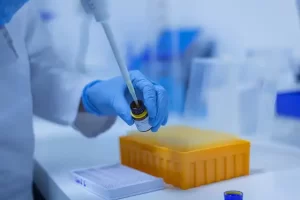Revolutionary Magnetic Hydrogel Speeds Diabetic Wound Healing
- Paternal Microbiome Perturbations Impact Offspring Fitness
- New Report Casts Doubt on Maradona’s Cause of Death and Rocks Manslaughter Case
- Chinese academician unable to provide the exact source of liver transplants
- Early Biomarker for Multiple Sclerosis Development Identified Years in Advance
- Aspirin Found Ineffective in Improving Recurrence Risk or Survival Rate of Breast Cancer Patients
- Child Products from Aliexpess and Temu Contain Carcinogens 3026x Over Limit
Revolutionary Magnetic Hydrogel Speeds Diabetic Wound Healing
- AstraZeneca Admits for the First Time that its COVID Vaccine Has Blood Clot Side Effects
- Was COVID virus leaked from the Chinese WIV lab?
- HIV Cure Research: New Study Links Viral DNA Levels to Spontaneous Control
- FDA has mandated a top-level black box warning for all marketed CAR-T therapies
- Can people with high blood pressure eat peanuts?
- What is the difference between dopamine and dobutamine?
- How long can the patient live after heart stent surgery?
Revolutionary Magnetic Hydrogel Speeds Diabetic Wound Healing
Newly Developed Magnetic Hydrogel Accelerates Wound Healing by Exercising Skin Cells.
Diabetic patients often suffer from chronic skin ulcers on their feet, which are known for their slow healing, sometimes leading to severe infections and even amputation.
According to reports, a novel magnetic hydrogel can speed up the healing of such wounds by threefold, potentially preventing such dire consequences.
Diabetic foot ulcer patients are typically advised not to apply any weight on their wounds, as it can kill fragile newly formed skin cells, hindering the healing process.
However, some mechanical stimulation to the skin can promote the growth of new skin cells and aid in wound recovery.
Recognizing this paradox, scientists at the National University of Singapore have created this special water-based hydrogel.
The newly developed material contains tiny magnetic particles and two types of FDA-approved skin cells: keratinocytes, which play a critical role in skin repair, and fibroblasts, which form connective tissue in the skin.
When the wound area is exposed to a dynamic magnetic field generated by an external device, the magnetic particles react by moving gently, and the cells move in response. These cells interact with the patient’s own skin cells, essentially providing them with gentle yet effective exercise.

The injured foot is placed into a magnetic stimulation device for two to three hours of treatment, image source: National University of Singapore
In tests conducted on mice, the gel therapy increased the growth rate of dermal fibroblasts (the main type of skin cell) by approximately 240% and boosted collagen production by over double. The treatment also improved communication between keratinocytes and other cells, promoting the growth of new blood vessels at the wound site.
“The combination of magnetically responsive hydrogel with wireless magnetic-induced dynamic mechanical stimulation addresses a fundamental challenge in wound healing,” said Dr. Shou Yufeng, co-first author of the study published in Advanced Materials. “The underlying principles and the adaptability of our technology, along with its general usability for patients, mean it can be applied to enhance wound healing in various situations beyond diabetes, including burns and chronic non-diabetic ulcers.”
Researchers from Nanyang Technological University, Sun Yat-sen University, Wuhan University of Technology, and the Agency for Science, Technology, and Research also contributed to this study.
Revolutionary Magnetic Hydrogel Speeds Diabetic Wound Healing
(source:internet, reference only)
Disclaimer of medicaltrend.org
Important Note: The information provided is for informational purposes only and should not be considered as medical advice.



